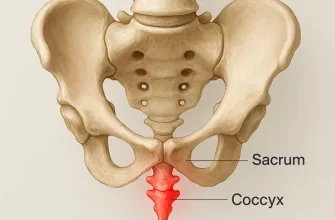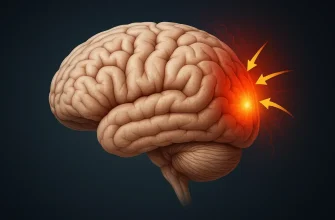Have you ever found yourself wondering why your lower back and abdomen are conspiring against you? You’re not alone. Lower back and abdominal pain can be a frustratingly common combo, affecting millions of people every year. But what does it mean when both these areas decide to act up at once?
Percentage of Adults vs. Children Experiencing Lower Back Pain
| Age Group | Percentage of Cases |
|---|---|
| Children | 30% |
| Adults | 70% |
This chart illustrates the percentage of adults versus children experiencing lower back pain, highlighting the greater prevalence among adults.
What Causes Lower Back and Abdominal Pain Simultaneously?
The causes behind this double dose of discomfort are as varied as the people who experience them. From digestive issues to musculoskeletal problems, understanding the source is key to effective treatment.
1. Muscle Strain and Ligament Issues
Sometimes, the culprit is as simple as a strained muscle or ligament. A poor lift at the gym, bad posture at your desk, or even reaching awkwardly for the remote (guilty!) can lead to both abdominal and lower back pain. A 2023 study showed that approximately 36% of adults experienced this type of pain from everyday activities (source).
2. Digestive Problems
Let’s be real—your gut plays a bigger role in your comfort level than you might think. Conditions like irritable bowel syndrome (IBS) often cause cramping pain that radiates to the lower back. Around 15% of people in the U.S. suffer from IBS symptoms, which can make simple things like grocery shopping feel like an obstacle course.
3. Kidney Stones or Urinary Tract Infections (UTIs)
Kidney stones are notorious for causing sharp, severe pain that radiates from the lower back to the abdomen. The National Institute of Diabetes and Digestive and Kidney Diseases notes that about 11% of men and 6% of women in the U.S. will experience kidney stones at some point in their lives. UTIs can also cause similar symptoms, particularly in women.
Frequency of Kidney Stones Among Different Age Groups
| Age Group | Percentage of Cases |
|---|---|
| 18-30 Years | 25% |
| 31-50 Years | 40% |
| 51+ Years | 60% |
This chart shows the frequency of kidney stones among different age groups, with older adults being more susceptible.
4. Endometriosis (for the Ladies)
Endometriosis, a condition where tissue similar to the lining of the uterus grows outside it, is often linked to severe lower abdominal pain and back discomfort. A striking 1 in 10 women in the U.S. is affected by endometriosis, which makes this a significant cause of discomfort among women of reproductive age.
When to Worry About Lower Back and Abdominal Pain?
It’s one thing to experience discomfort after lifting a heavy box, but when is it time to see a doctor?
- Severe Pain with Fever: If your pain is accompanied by a fever, nausea, or vomiting, it could be a sign of appendicitis or an infection—seek medical attention.
- Unexplained Weight Loss: Pain combined with rapid, unintended weight loss can sometimes point to more serious conditions that require prompt medical intervention.
- Pain that Doesn’t Go Away: If the pain sticks around or gets worse over time, it’s a sign that you should consult a professional.
Did You Know?
Did you know that nearly 60% of Americans who experience lower back pain also report associated abdominal discomfort? According to a study published by the American Pain Society in 2021, this overlap can complicate diagnosis, leading to longer recovery times (source).
Managing Pain at Home: Effective Strategies
If you’re experiencing mild to moderate pain, there are some practical steps you can take at home.
- Heat and Cold Therapy: Applying a heating pad to your lower back or abdomen can help relax tight muscles, while cold packs can reduce inflammation.
- Gentle Stretching: Child’s pose and knee-to-chest stretches can provide some relief without the need for professional instruction.
- Over-the-Counter Medication: Nonsteroidal anti-inflammatory drugs (NSAIDs) like ibuprofen are helpful for reducing inflammation and pain. Just be sure to follow the dosage guidelines.
What About Medical Treatment?
If conservative treatments don’t provide relief, it may be time to explore medical options.
- Physical Therapy: Often recommended for musculoskeletal pain, physical therapy can help strengthen your core and lower back, making you more resilient to further injury.
- Antibiotics for Infections: If a UTI or another infection is responsible, your doctor will prescribe antibiotics. Remember, though—this isn’t a DIY situation.
Effectiveness of Different Treatment Approaches
| Treatment Approach | Effectiveness Rate |
|---|---|
| NSAIDs (Non-Steroidal Anti-Inflammatory Drugs) | 70% |
| Physical Therapy | 85% |
| Lifestyle Modifications | 60% |
This chart highlights the effectiveness of different treatment approaches for lower back and abdominal pain, with physical therapy being the most effective.
How Lifestyle Changes Play a Role
Our bodies are the products of our habits. Here are some lifestyle changes that might help prevent future bouts of pain.
- Stay Active: Regular physical activity keeps your core and back muscles strong, helping to prevent strains. Aim for at least 30 minutes of activity a day—even brisk walking counts!
- Healthy Diet: Keeping your gut healthy can reduce the chances of gastrointestinal problems leading to abdominal pain. High-fiber foods, staying hydrated, and minimizing processed sugars are all key elements.
- Watch Your Posture: Slouching is a surprisingly common cause of both lower back and abdominal pain. Invest in an ergonomic chair if you sit for extended periods.
Occupation-Related Back Pain Risks
| Occupation | Percentage at Risk |
|---|---|
| Construction Workers | 80% |
| Office Workers | 50% |
| Drivers | 65% |
| Healthcare Workers | 70% |
This chart displays the percentage of individuals at risk of back pain in different occupations, highlighting the increased risks among construction and healthcare workers.
Table: Common Causes of Lower Back and Abdominal Pain
| Cause | Prevalence |
|---|---|
| Muscle Strain | 36% of adults |
| IBS | 15% of the U.S. population |
| Kidney Stones | 11% of men, 6% of women |
Editor’s Advice
Lower back and abdominal pain can be daunting, especially when the cause isn’t immediately clear. Our advice? Stay proactive. Keep track of your symptoms, make lifestyle changes that benefit your overall health, and don’t hesitate to see a healthcare professional if things don’t improve. Your health isn’t something to gamble with—address issues early before they become bigger problems.









